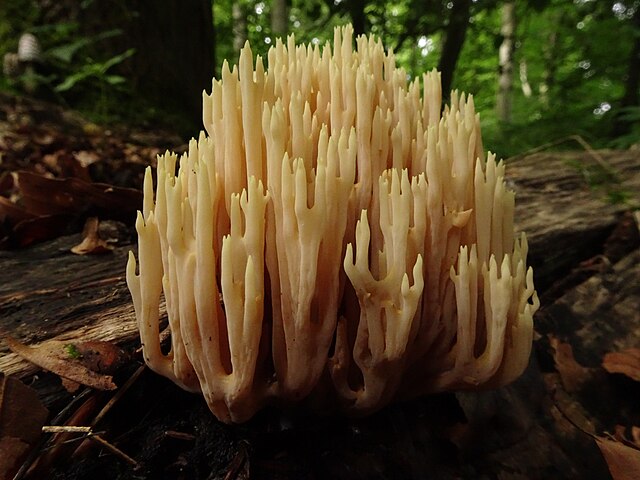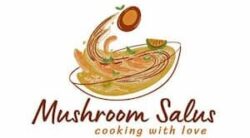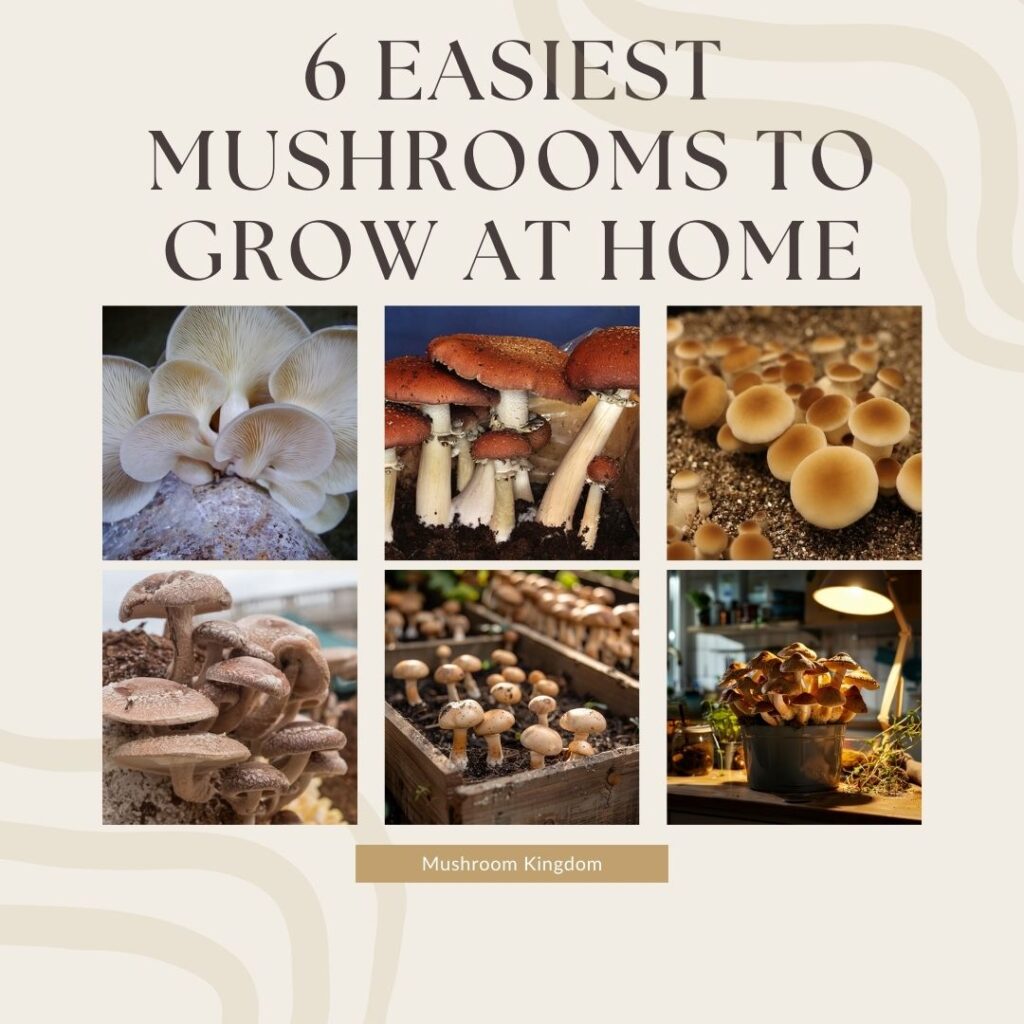Mushrooms, often overlooked in the natural world, offer a stunning array of shapes, colors, and sizes. From the forest floor to decaying logs, these fungi captivate with their unique beauty. Let’s delve into the enchanting world of mushrooms and discover the ten most beautiful varieties you might encounter.
1. Fly Agaric (Amanita muscaria)
The Fly Agaric stands out with its bright red cap dotted with white spots. This iconic mushroom often appears in fairy tales and folklore. The vibrant red hue, coupled with its distinctive white warts, makes it one of the most recognizable mushrooms. You can find this beauty in forests, particularly under birch and pine trees.

2. Entoloma Hochstetteri
Entoloma Hochstetteri, also known as the blue pinkgill, mesmerizes with its striking blue color. This rare mushroom, native to New Zealand, features a vibrant blue cap and gills, creating a stunning contrast against the forest floor. Its unique color comes from three azulene pigments, which give it a surreal appearance.
Although beautiful, it remains largely unknown and is not considered edible.

3. Lion’s Mane Mushroom (Hericium erinaceus)
The Lion’s Mane Mushroom looks like a cluster of cascading icicles. Its white, shaggy appearance gives it a unique charm. This mushroom often grows on hardwood trees and has garnered attention not only for its looks but also for its potential health benefits.
In addition to its medicinal properties, it also offers a delicious taste, often compared to seafood.

4. Amethyst Deceiver (Laccaria amethystina)
With its rich purple color, the Amethyst Deceiver catches the eye. It grows in woodlands, especially in areas rich in leaf litter. The cap and stem both exhibit a vivid amethyst hue, which can fade with age or weather conditions. Despite its delicate appearance, it remains a robust species that can be found throughout the year.

Violet Coral (Clavaria zollingeri)
The Violet Coral mushroom captivates with its delicate, branching structure and vivid violet color. Resembling an underwater coral, this mushroom stands out against the forest floor. It grows in both deciduous and coniferous forests, adding a splash of color to the landscape. Despite its fragile appearance, the Violet Coral is a resilient species that thrives in various environments.

6. Turkey Tail (Trametes versicolor)
The Turkey Tail mushroom boasts a myriad of colors arranged in concentric circles on its fan-shaped cap. Its name comes from its resemblance to the tail feathers of a turkey. This mushroom grows on decaying wood and can display a variety of colors, including brown, orange, blue, and white. Beyond its beauty, it also holds a prominent place in traditional medicine for its immune-boosting properties.

7. Bleeding Tooth Fungus (Hydnellum peckii)
The Bleeding Tooth Fungus presents a gory yet fascinating appearance. Young specimens exude a red, sap-like liquid that contrasts sharply with its white cap, resembling blood. This bizarre yet captivating fungus grows in coniferous forests and often forms symbiotic relationships with trees. Despite its alarming look, it remains harmless and non-toxic.

8. The Devil’s Cigar (Chorioactis geaster)
Native to Texas and Japan, the Devil’s Cigar opens with a dramatic flair. Initially appearing as a dark, closed cigar, it splits open to reveal a star-shaped structure. This transformation, accompanied by a hissing sound as it releases spores, adds to its mystique. Its rarity and striking appearance make it a coveted find among mushroom enthusiasts.

9. Green Elfcup (Chlorociboria aeruginascens)
The Green Elfcup, a small but vivid mushroom, decorates decaying wood with its turquoise hue. While the mushroom itself might go unnoticed due to its size, the stained wood it leaves behind, known as green oak, gets highly prized by woodworkers. This tiny fungus adds a touch of color to the forest, creating natural art on fallen branches.

10. Coral Fungus (Ramaria formosa)
The Coral Fungus earns its name from its resemblance to ocean coral. Its branching structure and vibrant colors, ranging from yellow to pink, make it a striking presence in the forest. This mushroom grows on the ground, often among leaf litter in deciduous forests. Its intricate shape and vivid colors make it a favorite among nature photographers.

Conclusion
Mushrooms, with their diverse forms and colors, bring a touch of wonder to the natural world. From the vibrant Fly Agaric to the glowing Mycena chlorophos, each species tells a unique story of adaptation and beauty.
Exploring these fungi not only enriches our understanding of nature but also reminds us of the hidden wonders that lie beneath our feet. Next time you venture into the woods, keep an eye out for these beautiful mushrooms — they might just take your breath away.
Tips for Mushroom Enthusiasts
If you feel inspired to look for these stunning mushrooms, here are some tips:
- Do your research: Before heading out, read up on the mushrooms you hope to find. Knowing their habitats and characteristics increases your chances of spotting them.
- Respect nature: Always tread lightly and avoid disturbing the environment. Mushrooms play crucial roles in their ecosystems.
- Safety first: Some mushrooms look similar to toxic species. If you’re unsure, it’s best to admire them in their natural habitat rather than risking consumption.
- Take photos, not specimens: Many beautiful mushrooms are rare or play essential ecological roles. Capture their beauty with your camera instead of picking them.
Fascinating Mushroom Facts
To further pique your interest, here are some intriguing facts about mushrooms:
- Ancient origins: Mushrooms have existed for millions of years, with fossil records dating back to the time of dinosaurs.
- Largest organism: The largest living organism on Earth is a honey fungus (Armillaria ostoyae) in Oregon, covering over 2,385 acres.
- Communication networks: Mycelium, the underground network of fungal threads, acts as a communication system for plants, sharing nutrients and information.
In conclusion, the world of mushrooms is rich with beauty and mystery.
Whether you are a seasoned mycologist or a curious nature lover, these ten beautiful mushrooms offer a glimpse into the fascinating world of fungi.
So, next time you find yourself in a forest, take a moment to appreciate the intricate and colorful fungi that thrive in the shadows.


